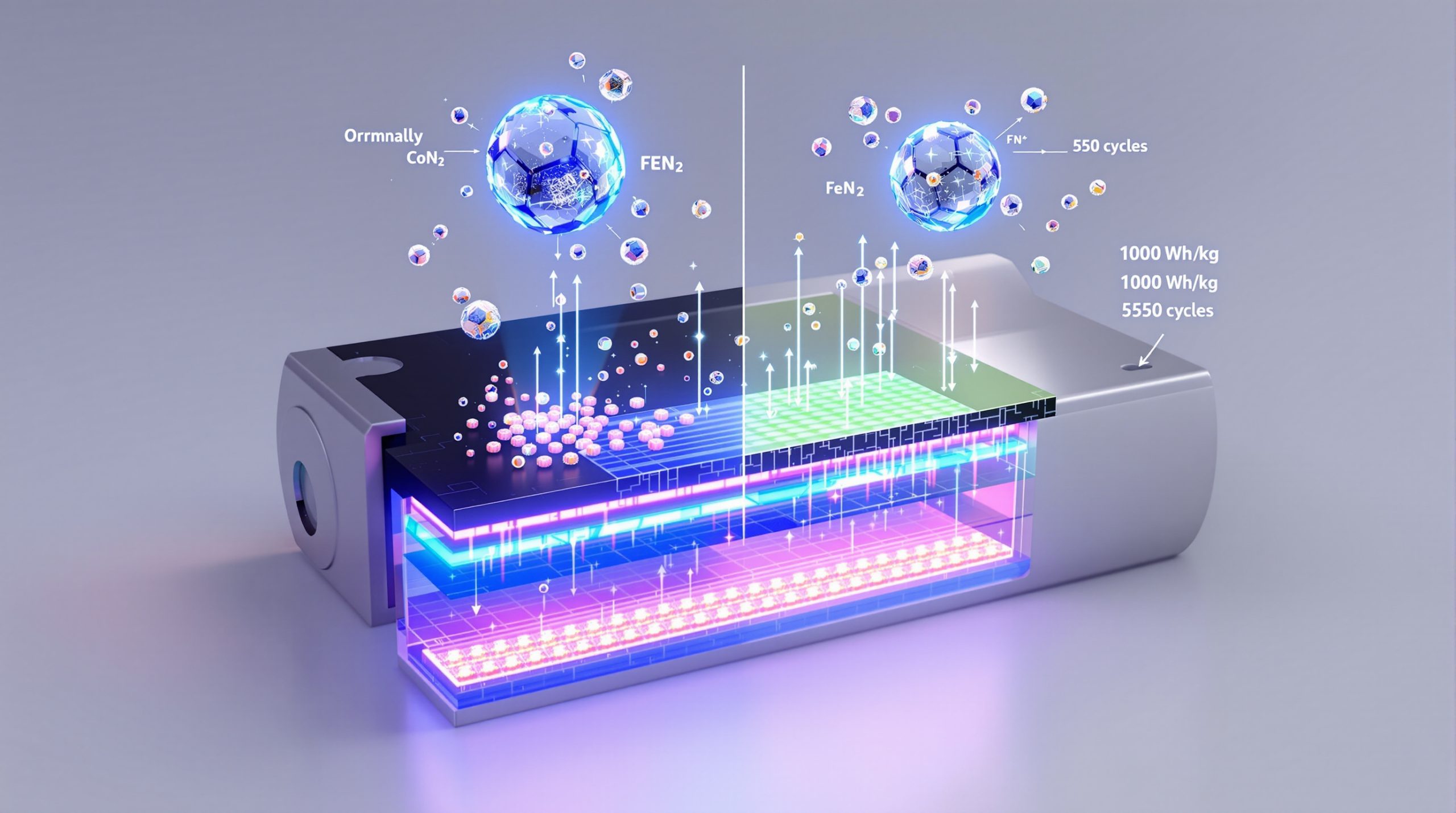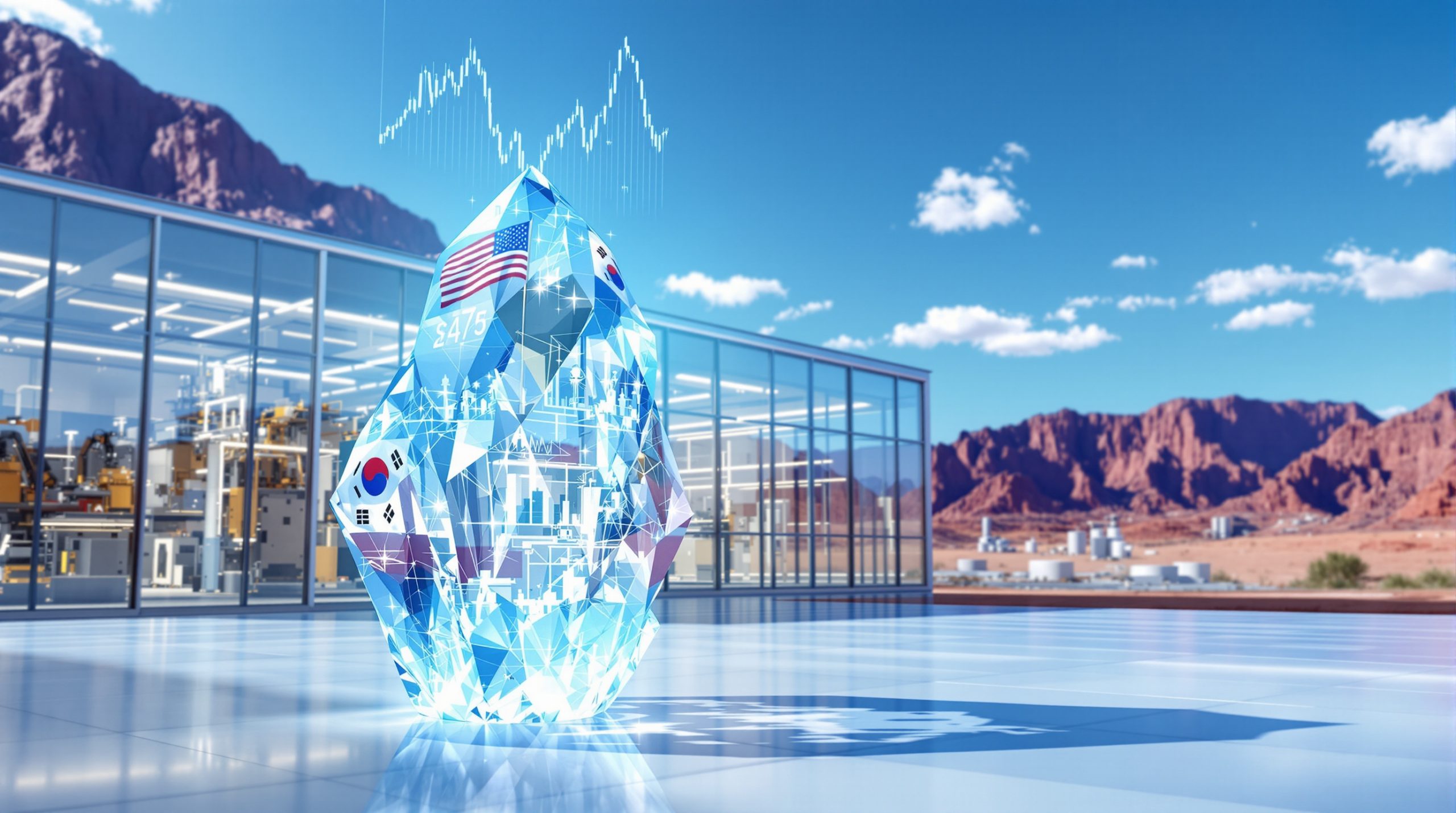Revolutionizing Zinc-Air Batteries: How Cobalt-Iron Catalysts Transform Energy Storage
The Promise of Zinc-Air Technology
Zinc-air batteries have emerged as one of the most promising next-generation energy storage technologies. With theoretical energy densities reaching up to 1,000+ Wh/kg—approximately five times higher than conventional lithium-ion batteries—these systems offer unprecedented storage capabilities. The fundamental appeal lies not only in their exceptional energy capacity but also in their composition, which relies on readily available, cost-effective materials including zinc, carbon, and manganese dioxide.
Unlike lithium-ion batteries with their volatile organic electrolytes, zinc-air batteries utilize aqueous electrolyte systems that significantly reduce fire hazards. This inherent safety advantage makes them particularly attractive for large-scale applications where thermal runaway risks must be minimized.
The potential applications span from grid-scale energy storage systems that can balance intermittent renewable energy sources to electric vehicle powertrains that demand high energy density and enhanced safety profiles.
Historical Limitations Holding Back Commercialization
Despite their theoretical advantages, zinc-air batteries have faced persistent challenges that have limited their widespread adoption. The primary obstacle has been the sluggish kinetics of oxygen reactions at the air cathode. These slow reaction rates lead to substantial energy losses during both charge and discharge cycles, manifesting as high overpotentials that dramatically reduce overall energy efficiency.
Traditional zinc-air systems have also suffered from limited cycle life, often degrading significantly after just a few hundred charge-discharge cycles—far below the thousands of cycles needed for practical applications. This rapid degradation stems from several issues including zinc electrode shape changes, electrolyte carbonation from atmospheric CO₂, and catalyst deactivation.
Power density limitations have further constrained the technology's application potential, especially for high-demand scenarios like vehicle acceleration or rapid grid response where substantial current delivery is essential.
How Do Cobalt-Iron Catalysts Solve the Zinc-Air Battery Challenge?
The Catalyst Breakthrough Explained
Researchers at Monash University have developed a revolutionary catalyst approach that addresses many of the fundamental limitations of zinc-air batteries. The innovation, designated CoFe-2DSA (Cobalt-Iron Two-Dimensional Single Atom), represents a significant departure from conventional catalyst designs.
Through an innovative heat treatment methodology, the research team transformed standard three-dimensional materials into ultra-thin carbon sheets with precisely positioned metal atoms. This process creates a framework where individual cobalt and iron atoms are strategically distributed across a nitrogen-doped carbon substrate, rather than existing as metal clusters or particles.
The strategic nitrogen doping creates specialized coordination environments around each metal atom, forming FeN₃ and CoN₃ moieties with direct metal-metal interactions that optimize electronic properties and catalytic performance. Recent battery recycling breakthrough technologies could potentially make these systems even more sustainable in the future.
Mechanism of Enhanced Performance
The primary function of the CoFe-2DSA catalyst is to accelerate both the oxygen reduction reaction (ORR) during discharge and the oxygen evolution reaction (OER) during charging cycles. These reactions represent the main bottleneck in traditional zinc-air battery performance.
By creating optimal metal-nitrogen-carbon structures, the catalyst significantly reduces the energy barriers associated with oxygen molecule activation and oxide ion formation. The synergistic interaction between neighboring cobalt and iron atoms facilitates electron transfer pathways that conventional single-metal catalysts cannot achieve.
This bifunctional catalytic ability—efficiently managing both ORR and OER processes—eliminates the need for separate catalysts and simplifies electrode design while enhancing overall performance metrics.
What Performance Improvements Do Cobalt-Iron Catalysts Deliver?
Record-Breaking Metrics from Recent Research
The Monash University research team achieved unprecedented performance metrics with their CoFe-2DSA catalyst system. The zinc-air batteries demonstrated a remarkable power density of 229.6 mW/cm², significantly outperforming commercial catalyst alternatives.
Energy density measurements reached 997 Wh/kg, approaching the theoretical maximum for zinc-air chemistry and confirming the catalyst's ability to unlock the technology's full potential.
Perhaps most impressively, the batteries maintained consistent performance through an extended testing period of 74 days of continuous operation, completing 3,552 charge-discharge cycles without significant degradation. This cycling stability represents a critical breakthrough for a technology historically limited by short operational lifespans.
Comparison with Traditional Catalysts
When benchmarked against state-of-the-art commercial catalysts, the CoFe-2DSA system demonstrates clear advantages. Traditional precious metal catalysts like platinum and ruthenium oxide, while effective, introduce prohibitive cost barriers for large-scale deployment.
The cobalt-iron catalyst not only outperforms these expensive alternatives in terms of catalytic activity but does so using substantially less costly materials. This cost-performance ratio represents a critical factor for commercial viability.
Furthermore, conventional single-metal catalysts typically excel at either ORR or OER reactions, but rarely both. The bifunctional capability of the CoFe-2DSA catalyst eliminates the need for complex dual-catalyst systems, simplifying battery design and reducing overall component requirements.
How Is the CoFe-2DSA Catalyst Manufactured?
Innovative Synthesis Process
The manufacturing process for the CoFe-2DSA catalyst involves a specialized heat treatment methodology that fundamentally transforms the structure of the starting materials. This process begins with precursor materials containing carbon, nitrogen, cobalt, and iron sources.
Through carefully controlled thermal processing, the three-dimensional precursors are converted into ultra-thin two-dimensional carbon sheets with precisely dispersed metal atoms. This transformation creates an extensive surface area that maximizes catalyst exposure to reactants.
The critical aspect of the synthesis is maintaining precise control over the metal atom dispersion, preventing aggregation that would reduce catalytic efficiency. Nitrogen incorporation occurs simultaneously during this thermal process, creating the coordination environments necessary for optimal metal atom function.
Structural Advantages Over Previous Catalysts
The resulting two-dimensional structure offers several distinct advantages compared to conventional catalyst designs. The ultra-thin sheet morphology maximizes active site accessibility, allowing oxygen molecules and electrolyte ions to interact efficiently with catalytic centers.
The carbon framework provides excellent electrical conductivity, ensuring rapid electron transfer during reactions. Additionally, this robust structure prevents metal atom aggregation during operation—a common failure mode in traditional catalysts where active metal sites gradually cluster together and lose effectiveness.
The engineered porosity of the material facilitates efficient mass transport of reactants and products, preventing performance limitations from diffusion constraints that plague many high-performance catalysts.
What Makes Cobalt-Iron Atom Pairs Uniquely Effective?
Advanced Simulation Insights
Computational modeling has revealed the fundamental mechanisms behind the exceptional performance of the cobalt-iron catalyst. Density functional theory calculations demonstrate significant synergistic electronic effects between adjacent cobalt and iron atoms that cannot be achieved with either metal alone.
The distinct electronic configurations of cobalt and iron create complementary properties when positioned in close proximity. Cobalt atoms excel at oxygen molecule adsorption, while iron atoms facilitate O-O bond cleavage—the combination creating an optimal pathway for the oxygen reduction process.
The charge transfer capabilities are further enhanced by the nitrogen coordination environment, which modifies the electronic structure of the metal centers to optimize binding energies for reaction intermediates.
Atomic-Level Design Principles
The catalyst's effectiveness stems from precise control over several atomic-scale parameters. The metal-metal distance between cobalt and iron atoms has been optimized to enable electronic cooperation without sacrificing individual catalytic properties.
The oxidation states of the metal centers are carefully managed through the nitrogen coordination environment, creating the ideal electronic configuration for catalytic activity while preventing oxidative degradation during cycling.
This atomic-level engineering represents a fundamental advance in catalyst design philosophy, moving beyond traditional approaches that focus on bulk material properties to instead precisely control individual atomic interactions.
How Close Are Zinc-Air Batteries to Practical Applications?
Grid-Scale Energy Storage Potential
With the breakthrough in catalyst technology, zinc-air batteries are positioned to address critical needs in the grid-scale energy storage sector. Their inherent characteristics align well with the requirements for large-scale stationary storage applications.
The extended cycling demonstrated by CoFe-2DSA equipped systems—over 3,500 cycles—meets the durability requirements for grid applications where daily cycling over multiple years is expected. This longevity, combined with the inherent safety of aqueous electrolytes, addresses key concerns for utility-scale deployments.
The abundant material supply chain for zinc-air batteries presents another significant advantage for grid-scale implementation, reducing dependency on constrained critical minerals energy transition that may face supply limitations as deployment scales increase.
Electric Vehicle Applications
While stationary storage applications represent the most immediate opportunity, the exceptional energy density achieved with the cobalt-iron catalyst also reopens possibilities for electric vehicle applications.
At 997 Wh/kg, the demonstrated energy density substantially exceeds current lithium-ion technology, potentially enabling driving ranges well beyond 400 miles per charge in appropriately designed vehicles. However, power density considerations remain important for acceleration requirements.
The enhanced safety profile of zinc-air chemistry addresses one of the persistent concerns with lithium-ion powered vehicles—thermal runaway risks. This safety advantage could reduce cooling system requirements and simplify battery pack design.
What Challenges Remain for Zinc-Air Battery Commercialization?
Engineering Considerations
Despite the significant catalyst breakthrough, several engineering challenges must be addressed before widespread commercialization becomes viable. Electrolyte management represents a primary concern, as the alkaline electrolyte must maintain proper concentration despite water evaporation and carbon dioxide absorption from ambient air.
Zinc electrode design requires further refinement to prevent shape changes and dendrite formation during extended cycling. Various approaches including 3D structured electrodes and electrolyte additives show promise for addressing these issues.
System-level integration presents additional complexities, particularly in areas like air management to control humidity levels and filter contaminants that could degrade performance over time. The mining industry evolution will play a crucial role in ensuring sustainable material supply for these batteries.
Performance Targets for Market Adoption
While the CoFe-2DSA catalyst has demonstrated impressive metrics, further performance improvements would accelerate market adoption. Power density enhancements would expand application potential, particularly for electric vehicles where high-current operation during acceleration demands excellent rate capability.
Extending cycle life beyond the demonstrated 3,500 cycles toward 5,000-10,000 cycles would further improve lifetime economics for long-duration applications. This extended durability will likely require additional innovations in electrolyte formulation and electrode structure.
Operational resilience across varied environmental conditions—particularly temperature extremes and humidity fluctuations—remains critical for real-world deployment scenarios where controlled laboratory conditions cannot be maintained.
How Does This Catalyst Compare to Other Emerging Zinc Battery Technologies?
Alternative Zinc Battery Chemistries
The zinc-air technology with CoFe-2DSA catalyst should be evaluated within the broader landscape of zinc-based battery systems under development. Nickel-zinc batteries offer higher voltage (1.6V compared to 1.2V for zinc-air) but cannot match the energy density potential due to their reliance on heavier nickel cathodes.
Zinc-manganese dioxide rechargeable systems provide simpler designs without the air management requirements but demonstrate substantially lower cycle life, typically below 1,000 cycles even with advanced electrolyte formulations.
Lithium-zinc hybrid systems combine aspects of lithium and electrochemistry to achieve high energy density but introduce additional complexity and cost compared to pure zinc-air approaches. The cobalt mining outlook remains crucial for understanding material availability for these systems.
Competitive Advantages of CoFe-Catalyzed Zinc-Air
When compared holistically against alternative zinc battery technologies, the CoFe-catalyzed zinc-air system offers distinct advantages. The demonstrated energy efficiency exceeds that of other rechargeable zinc systems, reducing operational costs over the battery lifetime.
The cycle life achieved—3,552 cycles—significantly outperforms most other zinc-based chemistries, creating a compelling total cost of ownership advantage despite potentially higher initial manufacturing complexity.
The power capability demonstrated (229.6 mW/cm²) addresses one of the historical limitations of zinc-air systems compared to other zinc chemistries, expanding the potential application range to include higher-power scenarios.
What Is the Future Outlook for Cobalt-Iron Catalysts in Energy Storage?
Ongoing Research Directions
The breakthrough with cobalt-iron catalysts has opened several promising research avenues. Optimization of the metal ratios and loading levels presents immediate opportunities for performance enhancement, with preliminary studies suggesting that fine-tuning these parameters could yield additional efficiency gains.
Exploration of trimetal catalyst systems incorporating elements like manganese or nickel alongside cobalt and iron shows potential for further improving catalytic activity through additional synergistic interactions.
Advanced carbon substrate engineering—including graphene-derivatives and hierarchical porous structures—offers pathways to enhance both conductivity and mass transport properties of the catalyst system. Current battery metals investment trends suggest significant interest in advancing these technologies further.
Commercialization Timeline and Prospects
Based on the demonstrated technology readiness level, the commercialization pathway appears promising. Laboratory-to-pilot scale transition efforts are underway, with initial focus on stationary storage applications where the technical requirements align well with the current capabilities.
Industry partnerships forming around the technology suggest growing confidence in its commercial potential. Several major energy storage developers have initiated validation testing of the catalyst technology in prototype systems.
Market entry for stationary storage applications could realistically occur within 2-3 years, assuming continued progress in manufacturing scale-up and system integration. Electric vehicle applications would likely follow several years later, requiring additional optimization for automotive-specific requirements.
FAQs About Cobalt-Iron Catalysts for Zinc-Air Batteries
How Do Cobalt-Iron Catalysts Improve Zinc-Air Battery Performance?
Cobalt-iron catalysts dramatically enhance zinc-air battery performance by accelerating the oxygen reactions at the air cathode. During discharge, they facilitate the oxygen reduction reaction, converting O₂ from air into hydroxide ions. During charging, they catalyze the reverse oxygen evolution reaction, releasing oxygen back to the atmosphere.
This catalytic activity significantly reduces energy losses during both charge and discharge cycles, improving overall energy efficiency from about 50% with conventional catalysts to over 70% with the CoFe-2DSA system. The result is higher usable capacity, better round-trip efficiency, and extended operational life.
Are Cobalt-Iron Catalysts Environmentally Sustainable?
From a sustainability perspective, cobalt-iron catalysts offer significant advantages over conventional precious metal alternatives. The dramatically reduced metal loading—using atomically dispersed cobalt and iron rather than bulk metals—minimizes the material requirements for each battery.
The extended cycle life achieved (over 3,500 cycles) further enhances sustainability by reducing the frequency of battery replacement and associated manufacturing impacts. This longevity effect often outweighs the initial material considerations in overall environmental assessment.
Additionally, both cobalt and iron have established recycling pathways, allowing for potential recovery of the catalyst materials at end-of-life, though the extremely low metal content may present economic challenges for recovery.
Can Zinc-Air Batteries Replace Lithium-Ion in Electric Vehicles?
While zinc-air batteries with CoFe-2DSA catalysts demonstrate energy density advantages that could theoretically enable longer driving ranges than lithium-ion alternatives, several challenges must be addressed before widespread EV adoption becomes viable.
The power density improvements, while substantial, still need further enhancement to match the acceleration capabilities of advanced lithium-ion systems. Current zinc-air technology would be better suited to steady-state driving than rapid acceleration scenarios.
System integration presents additional challenges, particularly around air management in mobile applications where changing environmental conditions affect performance. Effective filtration and humidity control systems would need development for automotive deployment.
What Makes the Monash University Catalyst Different from Previous Attempts?
The fundamental innovation in the Monash University approach lies in the precise atomic-level engineering of individual cobalt and iron atoms on a nitrogen-doped carbon framework. Previous catalyst designs typically used either metal particles/nanoparticles or metal oxides with relatively low atomic utilization.
By creating isolated metal atoms with specific coordination environments, the CoFe-2DSA catalyst achieves nearly 100% atomic utilization of the active metals, compared to surface-only activity in conventional catalysts where interior atoms remain inaccessible.
The direct metal-metal interactions between adjacent cobalt and iron atoms generate synergistic electronic effects that cannot be achieved in single-metal systems or in catalysts where metals are not atomically dispersed in close proximity.
Ready to Invest in Advanced Battery Technology?
Discover significant ASX investment opportunities in the battery technology sector with real-time alerts powered by Discovery Alert's proprietary Discovery IQ model, transforming complex mineral data into actionable insights. Explore historical examples of exceptional investment returns on our dedicated discoveries page and begin your 30-day free trial today.




